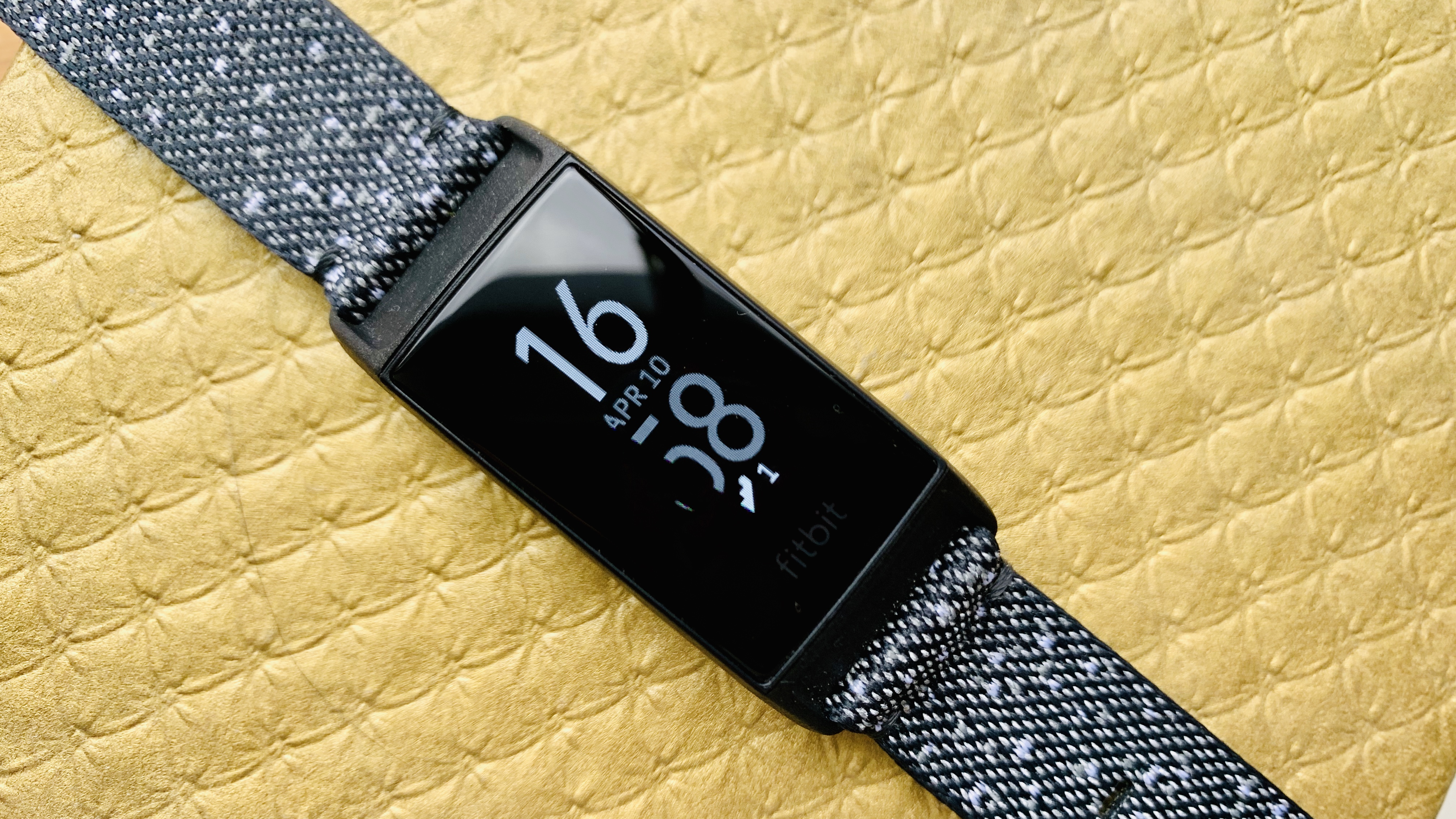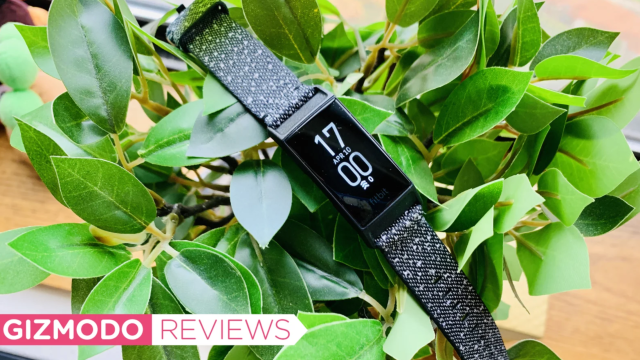How does one review a fitness tracker”something meant to get you moving and measure your athletic progress”at a time when most of us are forcibly stuck indoors, slowly melting into our couches? That’s the conundrum I’ve been grappling with ever since I unboxed my shiny new Fitbit Charge 4.
The surreal circumstances we find ourselves in due to the current pandemic has affected all recent gadget launches, but it’s compounded with the Charge 4. The big news here is it’s the first Fitbit tracker to add built-in GPS and NFC payments via Fitbit Pay. But with social distancing in place, it’s hard not to feel like these additions won’t be quite as useful for the next several months. Yes, we can still run, hike, bike, and walk outside, but there’s always the chance that policymakers could ban or impose restrictions on outdoor exercise, as they did in Paris. Adding Fitbit Pay is convenient, because it eliminates the need for you to touch surfaces, but it also depends on whether the essential stores in your area use contactless payments. I wasn’t able to in my immediate neighbourhood.

Fitbit Charge 4
What is it?
The latest tracker in the Charge series
Price
$249 for the regular; $290 for the Special Edition
Like
We finally get built-in GPS! NFC payments standard on all Charge 4s. Active Zone Minutes and heat maps are great additions.
No Like
You can't switch from exercise app. GPS maps in testing a little wonky. Screen still isn't the greatest.
But putting aside the weirdness of social distancing for a minute, the Charge 4 has mostly everything you could want in a fitness tracker. On top of the GPS and NFC payments”now standard on all Charge 4 devices”it’s got 7-day battery life, continuous heart-rate-monitoring, a comprehensive app with a built-in community, and over the years the design has evolved to be both more stylish and durable. Is it super exciting? Not it if you already have a Charge 3 or a similar basic fitness tracker. But if you’ve been hanging onto an older tracker for a while and smartwatches are too much for your needs (and your budget), upgrading to the Charge 4 is a solid choice for several reasons.
Fitbit added some genuinely smart updates to the software and user interface of the Charge 4. While adding built-in GPS itself was a welcome move on its own, it’s made better by the addition of heat maps in the Fitbit app. There are two types: one for heart rate and one for pace. It’s not the sort of thing you’d care about mid-run, but it adds some helpful context to your performance after. For instance, on a 3-mile (4.8 km) run, I could see not only when my heart was beating hardest, but also where I was running fastest. Likewise, the device also buzzes each time you enter a new heart rate zone. That’s helpful if you’re doing a HIIT workout or speed work, as it cuts down on your need to check your wrist for your heart rate.
[referenced url=”https://gizmodo.com.au/2020/04/fitbit-app-coronavirus-covid-19-information-australia/” thumb=”https://i.kinja-img.com/gawker-media/image/upload/c_lfill,w_768,q_90/psrtjedbd0aurnn8dlcd.jpg” title=”Australians Can’t Use The Best Part Of Fitbit’s New Coronavirus Service” excerpt=”Fitbit recently released its interestingly-timed Charge 4 – but that isn’t the only new thing that has come to the range. The Fitbit app is being updated to provide users with COVID-19 related information and services. The new dedicated coronavirus tab offers “information, motivation, and resources” about the virus – but Australians won’t be able to access the most useful part.”]
Since Fitbit launched its last tracker, the Versa 2, in September, the Fitbit app itself has also undergone some changes. The big one is that with the Charge 4, Fitbit has gotten rid of its Active Minutes tile and updated it to a newer metric called Zone Minutes. This is a welcome and long-overdue shift away from steps”a metric that has its origins in marketing, not science. Active Zone Minutes, however, are a digestible way for people to monitor whether they’re getting the recommended amount of activity per week.
Most reputable health organisations, including the American Heart Association and World Health Organisation, recommend 150 minutes of moderate activity or 75 min of vigorous activity per week. That can be hard to parse on your own. Does that leisurely walk to the coffee shop count? How do you gauge a 5-mile (8 km) hike or an interval run? Active Zone Minutes takes away the guesswork by giving you credit for each minute spent in the fat-burn zone and double the credit for time spent in the cardio or peak zones. It’s also a lot better than Fitbit’s previous Active Minutes metric, which I found to be confusing because it only gave you credit for an elevated heart rate lasting longer than ten minutes.
Fitbit also recently launched another sleep-related metric called Estimated Oxygen Variation, which uses the SpO2 sensor that have been included on Fitbit devices ever since the Ionic launched in 2017. It’s an alright metric that might be helpful if you’re struggling to get a solid night of sleep”but the more helpful sleep insights are now locked behind a Fitbit Premium subscription. The company is offering a 90-day free trial for its paid service now that more people are looking for ways to stay fit now that gyms are closed due to covid-19. It’s good timing, and also a very good marketing strategy.
This is a tempting pitch: For $250-$290, you get regular software updates, a lengthy free trial period of a premium service, and a helpful tool to help you stay active while locked down at home. I admit when the Charge 4 arrived, I was jazzed because I thought this would be the week where I nailed my fitness-at-home goals. A week has come and gone, and it’s probably fair to say you should temper expectations.
In my excitement over GPS, heat maps, and Active Zone minutes, I forgot that I’ve always had an issue with the Charge’s screens. Navigating between notifications and apps isn’t always as smooth as I’d like. Swipes register reliably, but sometimes there’s a little lag. The Charge 4’s screen can also be a little hard to read in direct sunlight. I get the appeal of a device that mainly tracks your activity and delivers basic notifications, but one thing I do prefer about the Versa and other full-featured smartwatches is the brighter screen and easier readability.
Another issue: switching menus mid-exercise is impossible. A reviewer friend of mine noted they couldn’t control Spotify from the wrist while working out. I also tried switching apps during an exercise and can confirm you can’t do it without ending your activity. Not a big deal if you’re not on Spotify, as using it on the Charge 4 requires a Premium account. But if you are a Spotify user, that’s honestly kind of dumb. Isn’t the whole point to make skipping tracks mid-activity easier? The lack of offline Spotify playlists means that unless you just like working out to the sound of your thoughts, the Charge 4 isn’t truly capable of phone-free exercise.
I tested the Charge 4 on two runs and a long walk with GPS. While each of the overall distance results was on par with my Apple Watch Series 5 and the MapMyRun app, the maps themselves…were a different story. On a 3.03-mile run, the Fitbit recorded a fairly accurate 2.96 miles. That was the exact same distance recorded by the Series 5. Except when I went to look at my maps, Fitbit had me running in the middle of the Hudson River. I checked MapMyRun and the Series 5, and their generated maps also had bits where I was in the river but not quite so…out there. I had nearly identical results with my second 3-mile (4.8 km) run.
The same thing happened on a longer, roughly 4-mile (6.4 km) walk. While the majority of my GPS map on the Charge 4 was accurate, there was one chunk where it said I had taken a several block detour toward the Oculus in downtown Manhattan. The reality is I’d walked in a straight line along the highway.
Moreover, I also noticed it takes a few seconds for the Charge 4 to find a GPS connection. It wasn’t a problem once I’d realised that quirk, but on my first run, it led to some skewed results. The Fitbit recorded a much slower split for my first mile”11’07” compared to the 10’36” on the Series 5 and the 10’12” split recorded by my phone. The discrepancy evened out over the remaining two miles of my run but it did make me question my heat map’s reliability toward the beginning of my run.
It is entirely possible that living in New York City is the culprit. It’s notoriously difficult to get reliable GPS in Manhattan, but especially in areas with tall buildings by the water”which happens to be where I live. It’s very possible that won’t be as much of an issue for people living in rural and suburban areas, or just anywhere outside of Manhattan. That said, while I’ve experienced this with several other GPS wearables, plenty of other smartwatches and trackers don’t have this problem. If you’re asking me to compare which has the better built-in GPS, I’d point to the Suunto 7, Garmin’s cadre of running watches, and even the Apple Watch Series 5.
The Charge 4’s issues aren’t a big deal if all you want is a simple device with a good platform to help you get the appropriate amount of activity per week. You just might want to consider something else if you love getting super granular about your splits, improving pace, and reviewing maps.
Will this particular tracker help you stay active during the pandemic? Probably, but any tracker would. Getting a buzz to move every hour is helpful, but also not unique to Fitbit. If you’re trying to sleep better through all this, then yes, Fitbit might help, but it’s mostly passive tracking with some common sense tips about better bedtimes. You’ll get more support with Premium, but that depends on if you’re willing to pay for that service once the trial period is up. And as I mentioned earlier, the new GPS features, Active Zone Minutes, and NFC payments are all good”if iterative”additions that would’ve been more compelling if not for the current situation. It’s bizarre. I want to feel more excited about what I think are good, solid updates. But truthfully, I can’t help but feel that if I could go outside more and live my life as usual, I would’ve had more fun with this device.
That’s not Fitbit’s fault. It’s just incredibly bad luck. For $250, you’re getting a solid range of features”it just sort of feels like with the Charge series, Fitbit’s philosophy is not to mess with a winning formula. The Charge 4 does almost everything right, but it’s just not the breath of fresh air the original Versa was. That, plus the doom and gloom dominating the headlines, make it hard to get hyped about the Charge 4. Even if it is pretty great.
README
-
Adds built-in GPS and NFC payments. Both are good but iterative updates.
-
Replaces Active Minutes with Active Zone Minutes”a step in the right direction.
-
Heat maps are helpful, though the Charge 4’s GPS wasn’t as accurate as other devices in testing so far.
-
Screen still isn’t the best; some lag between menus. Also not being able to control songs from Spotify during a workout is annoying.
-
Because NFC payments are standard on all Charge 4 models, the only reason to pay the extra $40 for the special edition is the woven band.
